
Membrane proteins are common proteins that are part of, or interact with, biological membranes. Membrane proteins fall into several broad categories depending on their location. Integral membrane proteins are a permanent part of a cell membrane and can either penetrate the membrane (transmembrane) or associate with one or the other side of a membrane. Peripheral membrane proteins are transiently associated with the cell membrane.

Peripheral membrane proteins, or extrinsic membrane proteins, are membrane proteins that adhere only temporarily to the biological membrane with which they are associated. These proteins attach to integral membrane proteins, or penetrate the peripheral regions of the lipid bilayer. The regulatory protein subunits of many ion channels and transmembrane receptors, for example, may be defined as peripheral membrane proteins. In contrast to integral membrane proteins, peripheral membrane proteins tend to collect in the water-soluble component, or fraction, of all the proteins extracted during a protein purification procedure. Proteins with GPI anchors are an exception to this rule and can have purification properties similar to those of integral membrane proteins.
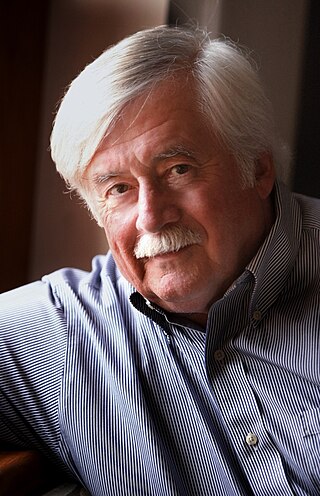
Thomas J. Silhavy is the Warner-Lambert Parke-Davis Professor of molecular biology at Princeton University. Silhavy is a bacterial geneticist who has made fundamental contributions to several different research fields. He is best known for his work on protein secretion, membrane biogenesis, and signal transduction. Using Escherichia coli as a model system, his lab was the first to isolate signal sequence mutations, identify a component of cellular protein secretion machinery, discover an integral membrane component of the outer membrane assembly machinery, and to identify and characterize a two-component regulatory system. Current work in his lab is focused on the mechanisms of outer membrane biogenesis and the regulatory systems that sense and respond to envelope stress and trigger the developmental pathway that allows cells to survive starvation. He is the author of more than 200 research articles and three books.
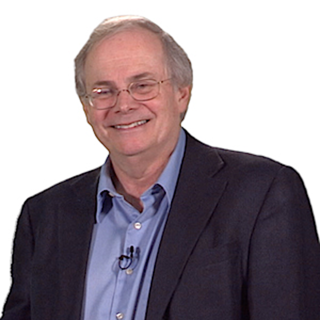
Gregory A. Petsko is an American biochemist and member of the National Academy of Sciences, the National Academy of Medicine, the American Academy of Arts and Sciences, and the American Philosophical Society. He is currently Professor of Neurology at the Ann Romney Center for Neurologic Diseases at Harvard Medical School and Brigham and Women's Hospital. He formerly had an endowed professorship in Neurology and Neuroscience at Weill Cornell Medical College and is still an adjunct professor of Biomedical Engineering at Cornell University, and is also the Gyula and Katica Tauber Professor, Emeritus, in biochemistry and chemistry at Brandeis University. On October 24, 2023, in a ceremony in the East Room of the White House, President Joe Biden presented Gregory Petsko and eight others with the National Medal of Science, the highest honor the United States can bestow on a scientist and engineer.

The nuclear envelope, also known as the nuclear membrane, is made up of two lipid bilayer membranes that in eukaryotic cells surround the nucleus, which encloses the genetic material.

Avery August is a Belizean-born American scientist who is currently a professor of immunology and vice provost at Cornell University.

Founded in 2007, the Joan and Sanford I. Weill Institute for Cell and Molecular Biology is a collaborative, non-profit research institution located on Cornell University's campus in Ithaca, New York. The Weill Institute consists of twelve faculty-led teams, appointed in several life sciences departments within Cornell University. The "cornerstone" of the University's $650 million New Life Sciences Initiative, the Institute is intended to foster multidisciplinary, collaborative research efforts toward answering fundamental questions in cell and molecular biology.
The endosomal sorting complexes required for transport (ESCRT) machinery is made up of cytosolic protein complexes, known as ESCRT-0, ESCRT-I, ESCRT-II, and ESCRT-III. Together with a number of accessory proteins, these ESCRT complexes enable a unique mode of membrane remodeling that results in membranes bending/budding away from the cytoplasm. These ESCRT components have been isolated and studied in a number of organisms including yeast and humans. A eukaryotic signature protein, the machinery is found in all eukaryotes and some archaea.
Anthony P. Bretscher is a professor of cell biology at Cornell University in the Department of Molecular Biology & Genetics in the College of Arts and Sciences.
Lewis C. Cantley is an American cell biologist and biochemist who has made significant advances to the understanding of cancer metabolism. Among his most notable contributions are the discovery and study of the enzyme PI-3-kinase, now known to be important to understanding cancer and diabetes mellitus. He is currently Meyer Director and Professor of Cancer Biology at the Sandra and Edward Meyer Cancer Center at Weill Cornell Medicine in New York City. He was formerly a professor in the Departments of Systems Biology and Medicine at Harvard Medical School, and the Director of Cancer Research at the Beth Israel Deaconess Medical Center, in Boston, Massachusetts. In 2016, he was elected Chairman of the Board for the Hope Funds for Cancer Research.

The cell membrane is a biological membrane that separates and protects the interior of a cell from the outside environment. The cell membrane consists of a lipid bilayer, made up of two layers of phospholipids with cholesterols interspersed between them, maintaining appropriate membrane fluidity at various temperatures. The membrane also contains membrane proteins, including integral proteins that span the membrane and serve as membrane transporters, and peripheral proteins that loosely attach to the outer (peripheral) side of the cell membrane, acting as enzymes to facilitate interaction with the cell's environment. Glycolipids embedded in the outer lipid layer serve a similar purpose. The cell membrane controls the movement of substances in and out of a cell, being selectively permeable to ions and organic molecules. In addition, cell membranes are involved in a variety of cellular processes such as cell adhesion, ion conductivity, and cell signalling and serve as the attachment surface for several extracellular structures, including the cell wall and the carbohydrate layer called the glycocalyx, as well as the intracellular network of protein fibers called the cytoskeleton. In the field of synthetic biology, cell membranes can be artificially reassembled.
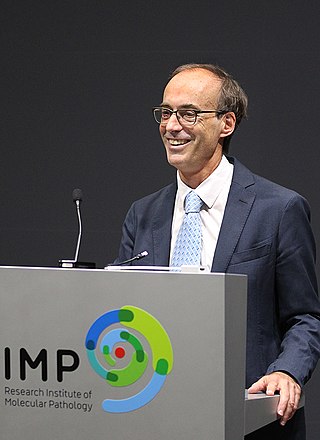
Ronald David Vale ForMemRS is an American biochemist and cell biologist. He is a professor at the Department of Cellular and Molecular Pharmacology, University of California, San Francisco. His research is focused on motor proteins, particularly kinesin and dynein. He was awarded the Canada Gairdner International Award for Biomedical Research in 2019, the Shaw Prize in Life Science and Medicine in 2017 together with Ian Gibbons, and the Albert Lasker Award for Basic Medical Research in 2012 alongside Michael Sheetz and James Spudich. He is a fellow of the American Academy of Arts and Sciences and a member of the National Academy of Sciences. He was the president of the American Society for Cell Biology in 2012. He has also been an investigator at the Howard Hughes Medical Institute since 1995. In 2019, Vale was named executive director of the Janelia Research Campus and a vice president of HHMI; his appointment began in early 2020.
Tobias C. Walther is the chair of the cell biology program at Sloan Kettering Institute in New York City and a professor at Weill Cornell School of Medicine, where he co-directs the Farese and Walther lab. He has been a Howard Hughes Medical Institute investigator since 2015. His primary responsibilities are to provide leadership in research and teaching in the scientific fields of metabolism, membrane biology and lipids.
Garth L. Nicolson is an American biochemist who made a landmark scientific model for cell membrane, known as the Fluid Mosaic Model. He is the founder of The Institute for Molecular Medicine at California, and he serves as the president, chief scientific officer and emeritus professor of molecular pathology. He is also Conjoint Professor in the Faculty of Science and Technology, University of Newcastle, Australia. During the outbreak of the Gulf War syndrome, he was the leading authority on the study of the cause, treatment and prevention of the disease. He was appointed chairman of the Medical-Scientific Panel for the Persian Gulf War Veterans Conference. On suspicion of the bacterium that caused the disease as a product of biological warfare, he made extensive scientific investigations and served as authority to the United States House of Representatives. For his service he was conferred honorary Colonel of the US Army Special Forces and honorary US Navy SEAL.

Ramanujan Shankar Hegde is a group leader at the Medical Research Council (MRC) Laboratory of Molecular Biology (LMB).
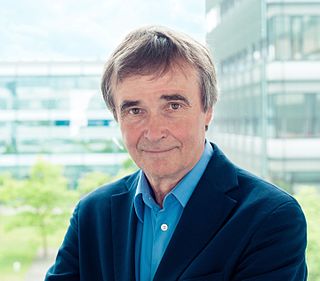
Kai Simons is a Finnish professor of biochemistry and cell biology and physician living and working in Germany. He introduced the concept of lipid rafts, as well as coined the term trans-Golgi network and proposed its role in protein and lipid sorting. The co-founder and co-organizer of EMBO, ELSO, Simons initiated the foundation of MPI-CBG, where he acted as a director (1998–2006) and a group-leader. He is the co-founder and co-owner of Lipotype GmbH.

Roger Lee Williams is a structural biologist and group leader at the Medical Research Council (MRC) Laboratory of Molecular Biology. His group studies the form and flexibility of protein complexes that associate with and modify lipid cell membranes. His work concerns the biochemistry, structures and dynamics of these key enzyme complexes.
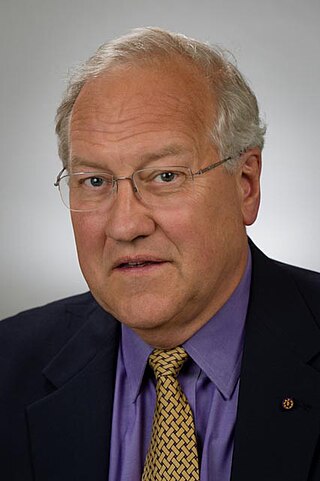
Robert A. Lamb was a British-American virologist. He was the Kenneth F. Burgess Professor at Northwestern University and since 1991, an investigator of the Howard Hughes Medical Institute. From 1990 to 2016, he was the John Evans Professor of Molecular and Cellular Biology at Northwestern University.
Agata Smogorzewska is a Polish-born scientist. She is an associate professor at Rockefeller University, heading the Laboratory of Genome Maintenance. Her work primarily focuses on DNA interstrand crosslink repair and the diseases resulting from deficiencies in this repair pathway, including Fanconi anemia and karyomegalic interstitial nephritis.
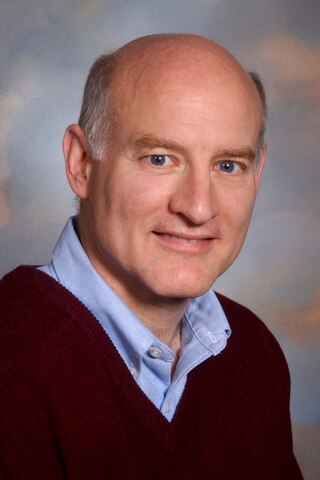
Wesley I. Sundquist is an American biochemist. Sundquist is known for studying the cellular, molecular and structural biology of retroviruses, particularly HIV. He is also known for studying the ESCRT pathway in cell division.














